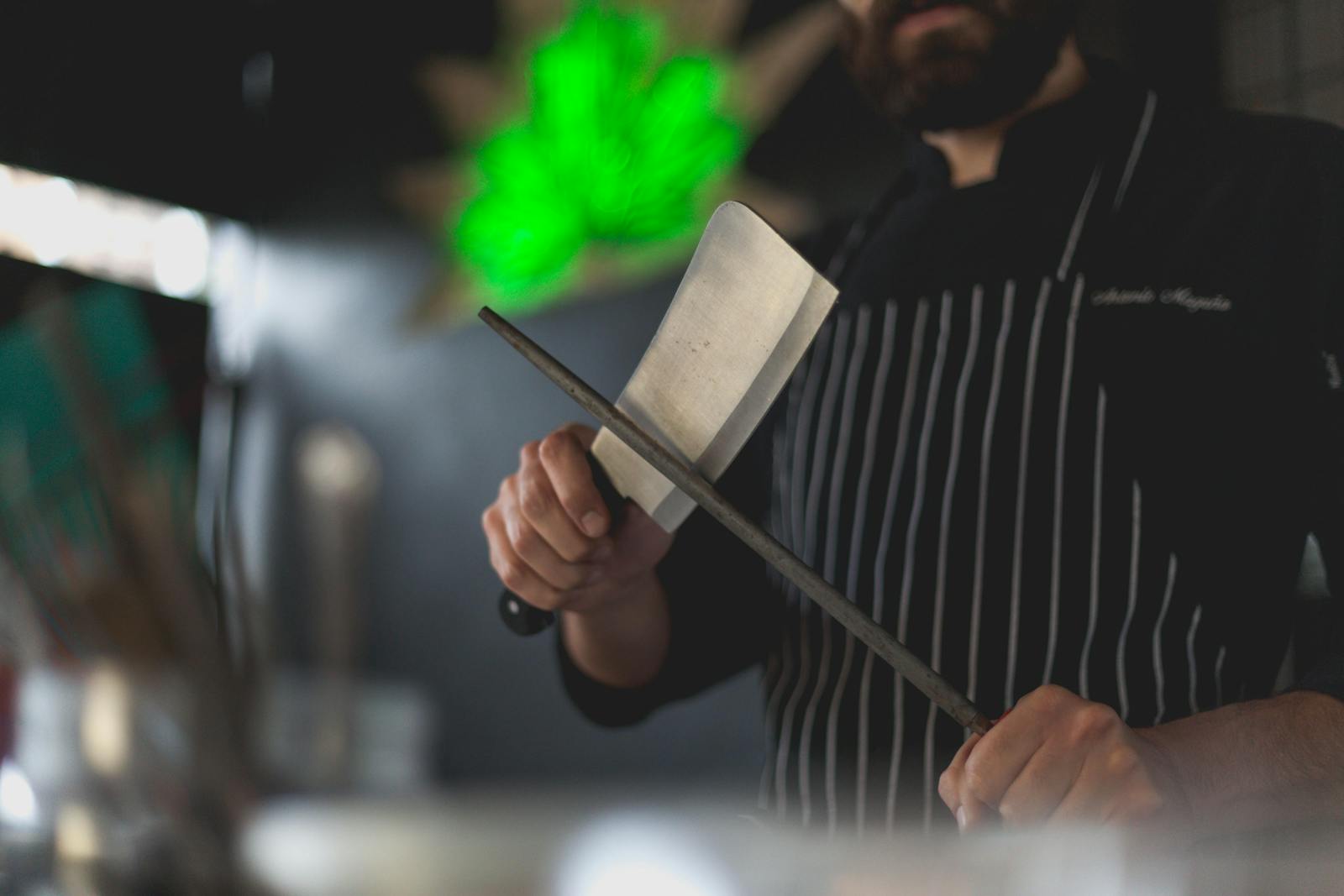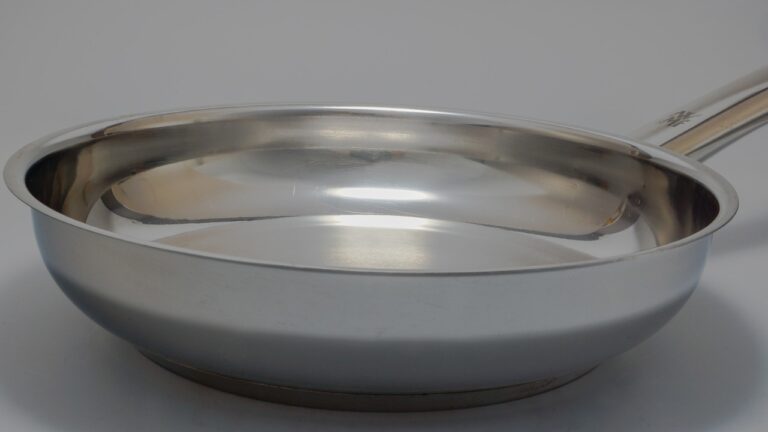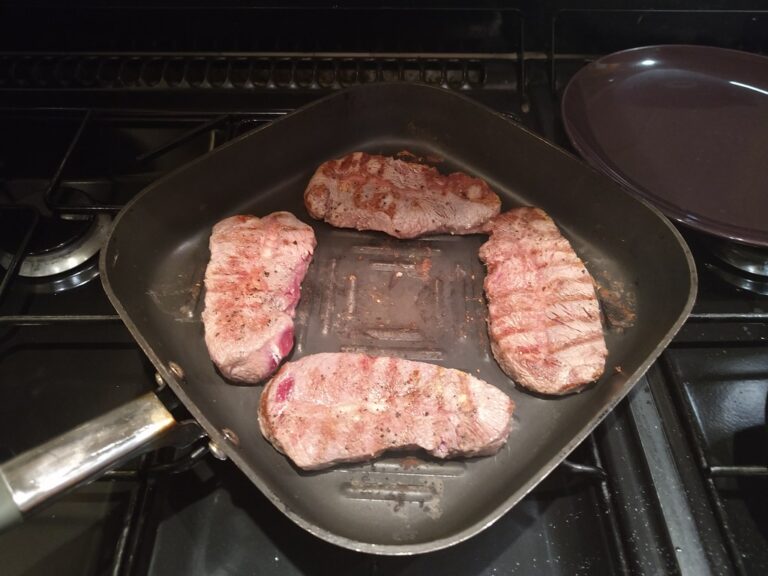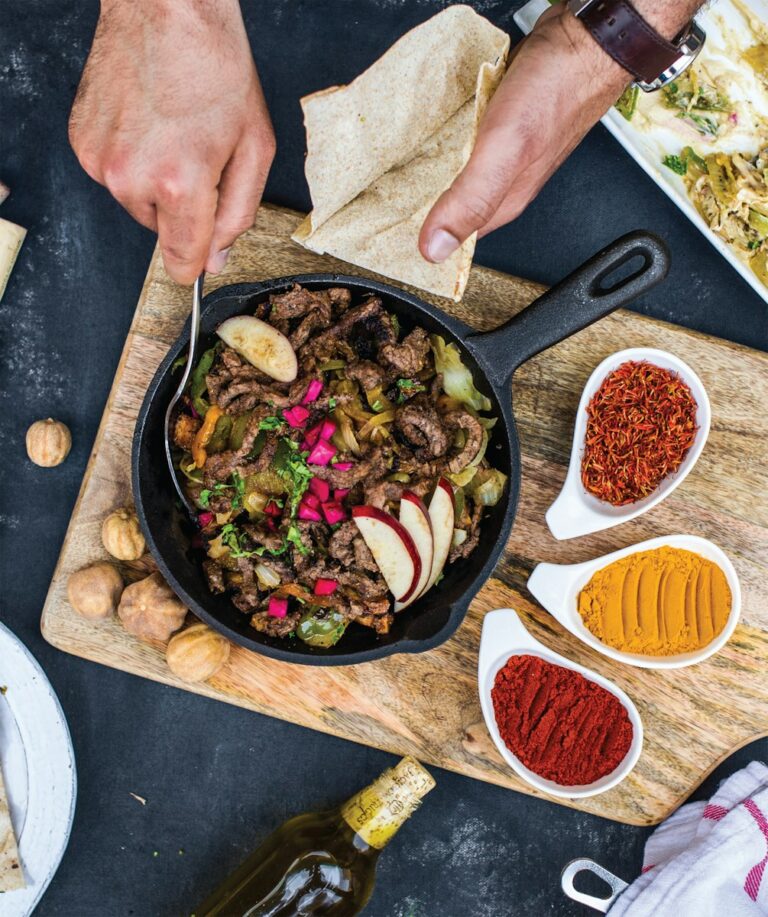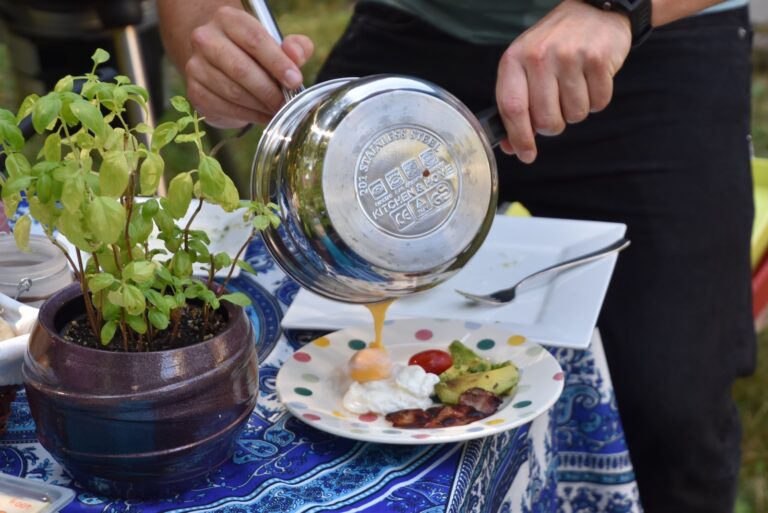As someone who loves spending time in the kitchen, I quickly realized the importance of having a sharp knife. It not only enhances control and safety, but also makes cooking more enjoyable.
But I understand that sharpening knives can be daunting. That’s why I wrote this article – to demystify the process and share my knowledge.
In this article, I’ll cover different sharpening methods, focusing on waterstones. Get ready to master the art of knife sharpening and elevate your culinary skills.
Key Takeaways
- A sharp knife is crucial for control and safety in the kitchen.
- Regular knife sharpening is important regardless of the knife’s price or type.
- Waterstones (whetstones) are highly recommended for sharpening knives.
- Honing the knife with a honing steel is necessary for maintaining its condition.

The Importance of Knife Sharpening
Regular knife sharpening is crucial for maintaining control and safety in the kitchen, as well as making cooking more enjoyable. When your knives are sharp, you have better control over your cuts and reduce the risk of accidents. Blunt knives, on the other hand, can slip and cause injuries.
Additionally, sharpened knives make cooking tasks easier and more efficient. However, there are different methods of knife sharpening with their own pros and cons. Waterstones are highly recommended for their versatility and ability to sharpen any knife. Pull-through sharpeners are convenient but should be avoided for Japanese or brittle blades.
Regular maintenance of your knives through sharpening not only ensures their performance but also prolongs their lifespan. So, take the time to sharpen your knives regularly for a safer and more enjoyable cooking experience.
Different Methods of Knife Sharpening
Using waterstones or pull-through sharpeners are two different methods for sharpening knives. Both have their own benefits and drawbacks.
| Benefits of Pull-Through Sharpeners | Pros of Waterstones | Cons of Waterstones |
|---|---|---|
| Easy to use and quick sharpening process | Versatile and can be used on any knife | Requires practice and concentration |
| Suitable for most types of blades | Provides a precise and fine edge | Takes time to get used to the correct angle |
| Convenient for beginners or those who are intimidated by sharpening | Offers affordability and durability | Can be messy and require soaking |
| Can be used for regular maintenance and touch-ups | Allows for customization of the sharpening process | Requires additional equipment such as a honing steel |
| Creates micro-serrations on the blade for added sharpness | Can be used for both Japanese and Western-style knives | Not suitable for Japanese or brittle blades |
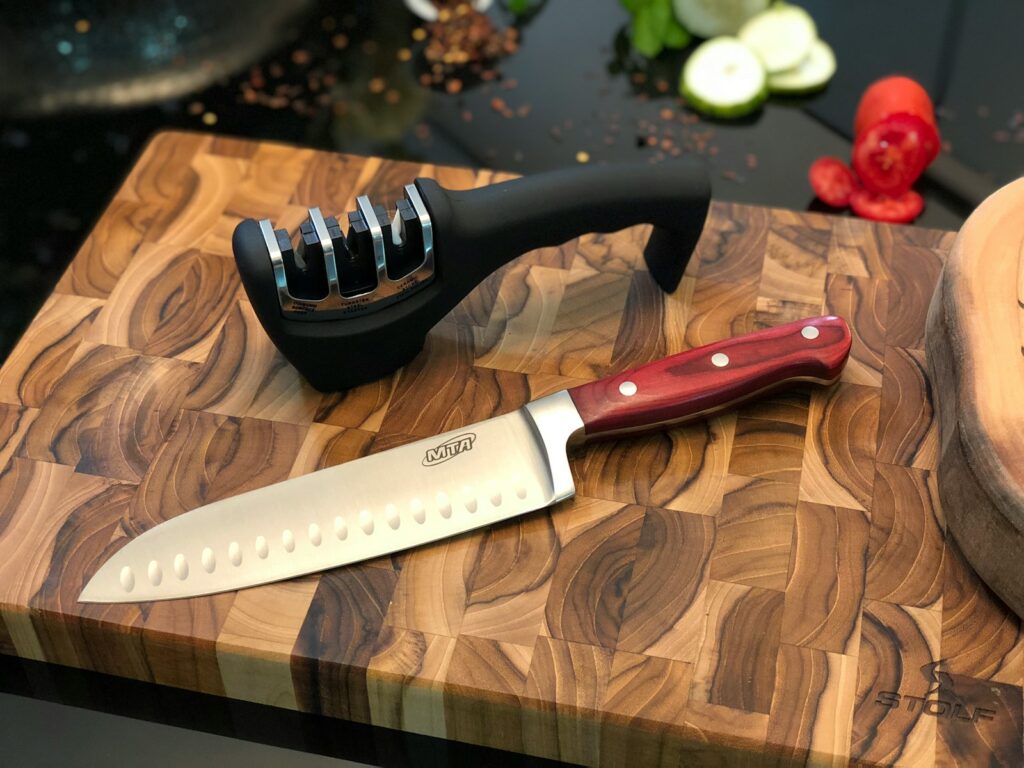
Pull-through sharpeners are convenient and easy to use, making them ideal for beginners or those who are intimidated by sharpening. They provide quick results and can be used for regular maintenance. However, they may not be suitable for Japanese or brittle blades. On the other hand, waterstones offer versatility and the ability to customize the sharpening process. They provide a precise and fine edge, but require practice and concentration to maintain the correct angle. While waterstones can be messy and require soaking, they are suitable for both Japanese and Western-style knives.
Sharpening With Japanese Waterstones
I find sharpening with Japanese waterstones to be a versatile and effective method for achieving a precise and fine edge on my knives.
Choosing the right waterstone grit:
- Different grit counts indicate the level of coarseness of the stone.
- Around 1,000 grits is ideal for sharpening a knife blade.
- Combination waterstones, like the King Kds 1000/6000, offer affordability and durability.
Best practices for waterstone maintenance:
- Soak the waterstone in water for 5-10 minutes before sharpening.
- Place the stone on a solid surface, using a slightly damp tea towel.
- Practice and concentration are key to achieving the desired angle.
- Clean the waterstone after use and allow it to dry completely before storing.
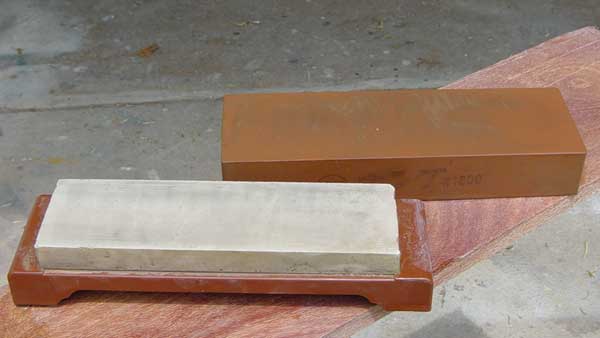
Sharpening with Japanese waterstones not only allows me to bring my knives to their optimal sharpness but also gives me a sense of control and satisfaction. With the right grit and proper maintenance, I can confidently achieve the desired edge for my knives.
Steps and Tips for Sharpening With a Waterstone
To achieve a precise and fine edge on my knives, I hold the blade at a 45° angle and glide it up and down the waterstone with gentle pressure.
When choosing a waterstone for knife sharpening, it’s important to consider the grit count. For sharpening, a stone with around 1,000 grits is ideal.
Additionally, it’s crucial to maintain the perfect angle while sharpening. For Japanese knives, a 12-15° angle is recommended, while a 20° angle is suitable for Western-style blades.
To achieve this angle, I focus on practicing and concentrating during the sharpening process. Starting with the tip, I glide the blade up and down the stone in sections, moving to the middle and finally the heel.
It may take time to get used to the angle, but with practice, it becomes natural.
Alternative Knife Sharpeners
The Chantry Knife Sharpener is a convenient option for quickly sharpening knives, but it isn’t suitable for Japanese blades or brittle knives. It uses two V-shaped rotating steels to sharpen the knife, adding micro-serrations to the edge of the blade. While it provides a different type of sharpness compared to a waterstone, there are pros and cons to consider when using pull-through sharpeners.
On the other hand, waterstones are highly recommended for sharpening knives, as they’re versatile and can be used on any knife. They come in different grit counts, indicating the level of coarseness of the stone. Ceramic wheel sharpeners, like the MinoSharp Plus Shinkansen Sharpener, offer an alternative option but may not provide as good an edge as a waterstone.
Honing Vs. Sharpening: What’s the Difference
Honing a blade is essential for keeping it in good condition and maintaining its edge. Many people often confuse honing with sharpening, but they are actually two different processes. Honing involves straightening the blade, while sharpening removes metal to create a new edge.
Here’s a table to help understand the difference:
| Honing | Sharpening |
|---|---|
| Straightens edge | Creates new edge |
| Maintains sharpness | Increases sharpness |
| Removes minimal metal | Removes metal |
| Quick and easy | Requires more effort |
The benefits of honing are numerous. By regularly honing your blade, you can keep it in optimal condition and prolong its lifespan. Honing also helps maintain the knife’s sharpness, making it safer and more efficient to use in the kitchen. It’s a simple task that should be done regularly to ensure your blade performs at its best. So remember, honing and sharpening are different processes, and honing is an important step in knife maintenance.
Maintaining Sharp Knives: How Often to Sharpen
Maintaining the sharpness of my knives is crucial, and I often wonder how often I should sharpen them. To ensure I keep my knives in optimal condition, I’ve learned some valuable tips and tricks.
Here are common mistakes to avoid and guidelines for how often to sharpen knives:
- Avoid waiting until the knife is completely dull before sharpening.
- Regularly check the sharpness by slicing through a piece of paper.
- Sharpen knives when they start to feel less effective and require more force to cut.
- Consider the frequency of knife usage and the type of food being prepared when determining how often to sharpen.
Frequently Asked Questions
Can I Use the Same Sharpening Method for Both Japanese and Western-Style Blades?
Yes, you can use the same sharpening method for both Japanese and Western-style blades. However, it’s important to note that pull-through sharpeners should be avoided for Japanese or brittle blades due to the risk of damage.
How Long Does It Typically Take to Sharpen a Knife Using a Waterstone?
Typically, it takes me around 10-15 minutes to sharpen a knife using a waterstone. When choosing the right grit, I look for around 1000 grit for sharpening. Common mistakes to avoid include applying too much pressure and not maintaining the correct angle.
Are There Any Specific Safety Precautions I Should Take When Sharpening a Knife?
When sharpening a knife, it’s important to take safety precautions. Use proper handling techniques to prevent accidents. Wear protective gear like gloves and goggles to ensure your safety.
What Should I Do if I Accidentally Chip or Damage the Blade While Sharpening?
If I accidentally chip or damage the blade while sharpening, I would stop immediately and assess the extent of the damage. If it’s minor, I would try to repair it using a sharpening stone. To prevent blade damage during sharpening, I should maintain the correct angle and apply gentle pressure.
Is It Necessary to Use a Honing Steel in Addition to Regular Knife Sharpening?
Yes, it is necessary to use a honing steel in addition to regular knife sharpening. Honing straightens the edge of the blade, keeping it in good condition, while sharpening removes metal to create a new edge.
Conclusion
In conclusion, mastering the art of knife sharpening is a valuable skill for any home cook.
By using the recommended technique of waterstones, you can achieve razor-sharp edges on your blades, enhancing control and safety in the kitchen.
With practice and concentration, anyone can become proficient in knife sharpening.
So, don’t be intimidated and start sharpening your knives today to elevate your culinary skills to new heights.
